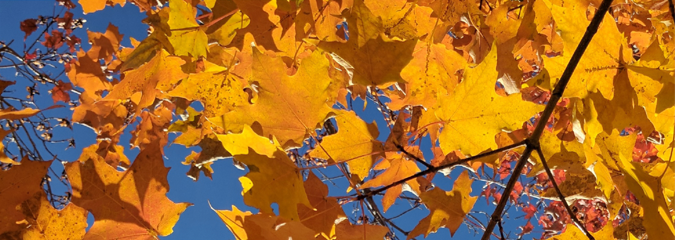A Guide to Pests, Problems, and Identification of Ornamental Shrubs and Trees in Montana - EB0235
By Sarah Eilers, Eva Grimme, Lauren Kerzicnik, and Noelle Orloff
View Introduction and Table of Contents as a PDF
PURPOSE OF THE GUIDE
This guide is designed as a resource for identifying and managing common pests and problems that may affect trees and shrubs in Montana residential areas. It also provides information to identify our most frequently planted trees and shrubs. Using this guide, practitioners will be able to identify common pests and problems of these plants and to implement management strategies based on integrated pest management (IPM) principles.
Integrated pest management is an effective and environmentally sensitive approach to pest management that relies on a combination of common-sense practices to manage pest damage by the most economical means and with the least possible hazard to people, property, and the environment. Important steps in an IPM program to manage woody plant pests include: pest identification; monitoring and assessing pest numbers and damage; setting guidelines for when pest management is required; preventing pests; using a combination of control methods including cultural, biological, mechanical or physical, and chemical; and assessing the effectiveness of pest management.
This guide is not meant to be an all-inclusive reference to pests and problems of woody plants. Instead, commonly encountered pests and disorders found on widely planted trees and shrubs are described. More comprehensive guides to plant, insect, and disease identification and management can be found under “Additional Resources” at the end of the guide.
HOW TO USE THE GUIDE
The first step in identifying a problem with a tree or shrub is to identify the plant. Insects and diseases are often associated with specific hosts, so knowing the host will help to narrow down the list of potential problems. Identifying characteristics of common trees and shrubs in Montana can be found on pages seven to 62. Once the host tree or shrub is determined, common insects and diseases grouped by host plant can be found on pages 63 to 68.
Observe the symptoms on your tree or shrub. Which part is showing symptoms of concern? What do the symptoms looks like? Find the common insect and disease issues for your host plant on pages 69 to 190 of this guide. If you find a pest that matches the symptoms you observe, read about the pest in detail as well as management options.
Although insects and diseases are typically blamed for plant issues, most problems with ornamental plants are abiotic (non-living) issues, such as over-watering or nutrient deficiencies. Descriptions of the most common abiotic disorders associated with Montana trees and shrubs are found on pages 191 to 218 of this guide.
If you need further assistance with identifying or managing pests on ornamental trees and shrubs, contact your local Extension office or other trusted resource.
CHEMICAL AND PESTICIDE USE DISCLAIMERS
Common chemical and trade names are used in this publication for clarity of the reader. Inclusion of a common chemical or trade name does not imply endorsement of that particular product or brand of herbicide and exclusion does not imply non-approval.
Pesticide usage suggestions provided in MSU Extension materials are intended to serve only as a guide and are published for educational purposes. If any suggestions conflict with a product label, follow the product label instructions. Read and follow all product labels carefully.
ACKNOWLEDGEMENTS
We acknowledge our reviewers Dr. David Baumbauer, Dr. Don Mathre, Ruth O’Neill, Dara Palmer, and Jennifer Weiss for their contributions to this project. We would also like to thank Jason Stutzman for his work designing and assembling this publication. The development and printing of this publication were funded by USDA-NIFA (2017-70006-27155).
Copyright © 2021 MSU Extension
We encourage the use of this document for nonprofit educational purposes. This document
may be reprinted for nonprofit educational purposes if no endorsement of a commercial
product, service or company is stated or implied, and if appropriate credit is given
to the author and MSU Extension. To use these documents in electronic formats, permission
must be sought from the Extension Communications Coordinator, 115 Culbertson Hall,
Montana State University, Bozeman, MT 59717; E-mail: [email protected]
The U.S. Department of Agriculture (USDA), Montana State University
and Montana State University Extension prohibit discrimination in all of their programs
and activities on the basis of race, color, national origin, gender, religion, age,
disability, political beliefs, sexual orientation, and marital and family status.
Issued in furtherance of cooperative extension work in agriculture and home economics,
acts of May 8 and June 30, 1914, in cooperation with the U.S. Department of Agriculture,
Cody Stone, Director of Extension, Montana State University, Bozeman, MT 59717.

